Manufacturing Consent
October 25, 2010 at 8:54 pm · Filed under Content / Architecture, Packaging / 3-Dimensional, Print / Editorial
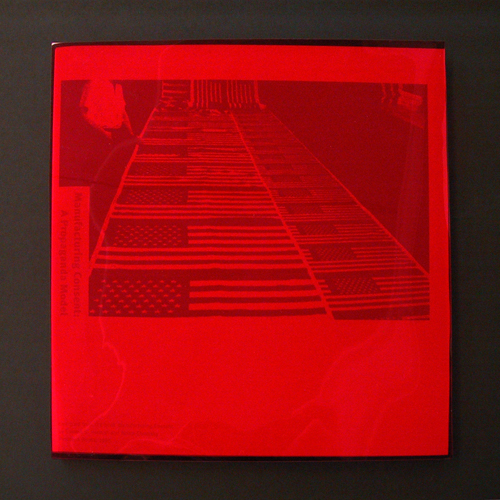
Manufacturing Consent, A Propaganda Model book in acetate slipcase; 9.5 x 9.5in., 28ppg. / 2003
What is the role of American mainstream media? This book visualizes Noam Chomsky’s and Edward S. Herman’s message that a few powerful individuals and corporations mask their own deceit and corruption through their control of the mass media. As the writers urge, the reader must take an active role in looking beneath the messages “filtered†by these entities in order to understand the real content.
In this piece—a project undertaken for the Publications course in the University of Washington Visual Communication Design program, in which we were to interpret an excerpt of this seminal work—expressions of manufactured mass media content are printed in light cyan blue while the Chomsky / Herman text is printed in red on white paper. Red acetate “filters” sharpen contrast of the cyan while obscuring the copy.
The first action the reader must take is to remove the book from its masking slipcase. Once removed, the subject’s title becomes immediately visible, while the mass production of American perception recedes.
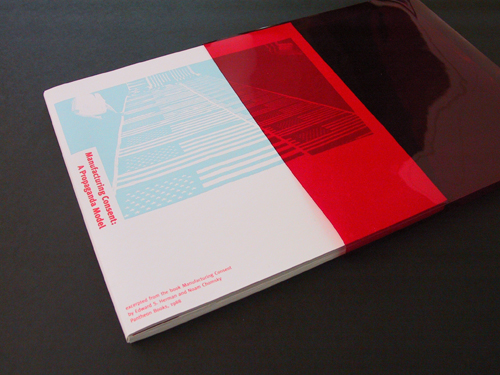
Manufacturing Consent, A Propaganda Model book drawn from acetate slipcase; 9.5 x 9.5in., 28ppg. / 2003
Each section begins with an automated assembly line, from which mainstream news stories emanate in cyan…
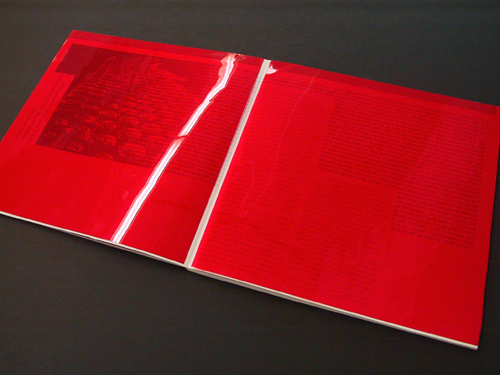
Manufacturing Consent, A Propaganda Model chapter head, filtered; 9.5 x 9.5in., 25ppg. / 2003
However, if the reader looks beneath the filter, the true content of the the Chomsky / Herman becomes clear:
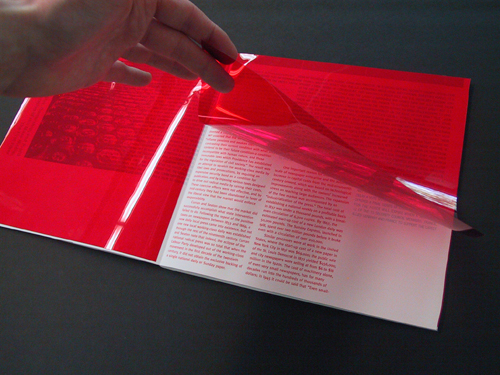
Manufacturing Consent, A Propaganda Model chapter head, acetate filter lifted to reveal body copy; 9.5 x 9.5in., 25ppg. / 2003
The reader is constantly offered the filtered information first. They must be vigilant in their search for the hidden truth. The voice of Chomsky / Herman is set flush-left and originates from the left of the page or spread, in reference to their political viewpoint. As well, their text comes from beneath the surface of the suppressive mainstream media.
But even the mass media presents bits of the truth. It just needs to be analyzed, re-contextualized and put back together in the correct order. To punctuate this idea, pull quotes of the Chomsky / Herman text are embedded within the mass media stream.
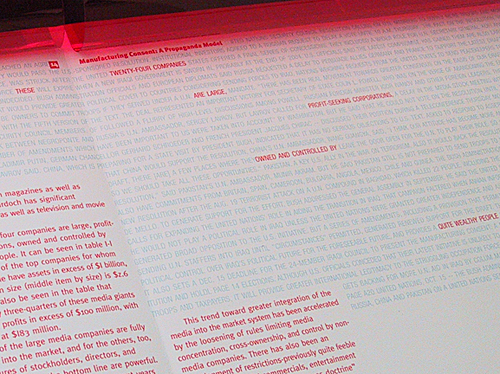
Manufacturing Consent, A Propaganda Model book, pull quote embedded in mainstream media text: “THESE… TWENTY-FOUR COMPANIES… ARE LARGE… PROFIT-SEEKING CORPORATIONS… OWNED AND CONTROLLED BY… QUITE WEALTHY PEOPLE”; 9.5 x 9.5in., 25ppg. / 2003
Sections end with the mainstream content running ragged, abstractly referencing a U.S. flag torn apart.
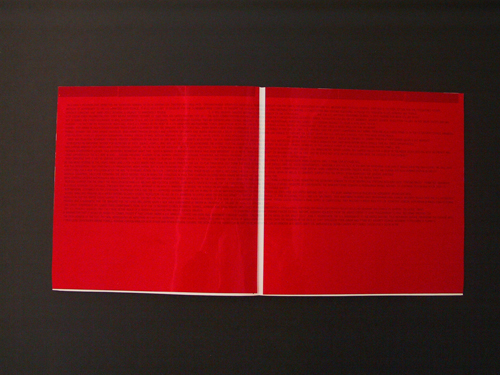
As with almost every project on which I have ever worked, this concept and execution came as the result of significant idea exploration and experimentation. Shown below are several initial directions for the piece. These include more literal references to the U.S. flag and interpretations of mass media and the vehicles by which they are delivered, as well as more comical ideas based on overt mind control by way of fanciful machinery.
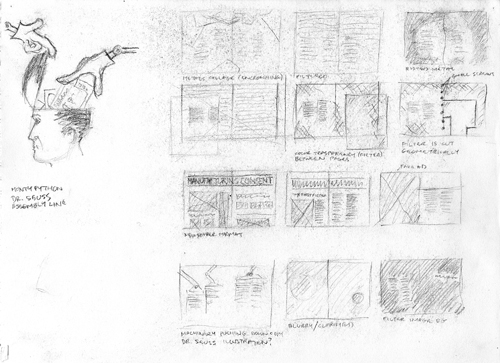

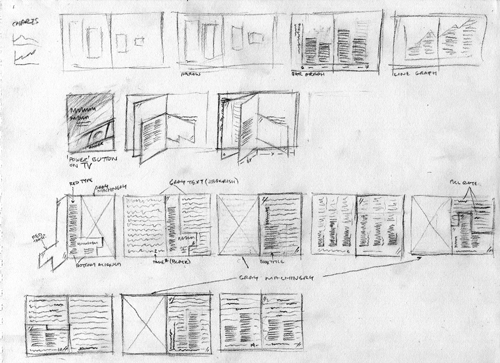
Manufacturing Consent, A Propaganda Model book excerpt concept sketched; pencil on paper 11 x 8.5in. (each) / 2003
Comping this book was no mean feat, requiring a lot of trial and error with size, coloration and density of typography and imagery and acetate in order to achieve the desired interaction between the two media, not to mention the actual printing, mounting trimming and construction of the book and slip case. But in the end, I was quite pleased with the realization of the concept, and the comp turned out to be durable enough that I was proud to show it on several interviews years back.
Unfortunately (funnily enough, now), by the time those interviews happened, several months after the class, design darling Stefan Sagmeister’s “Made You Look,” one of several of his monographs, had just hit that stands with a nearly identical execution concept. Nobody accused me of anything, but a few interviewer’s did mention it, which was most annoying to me because I wasn’t really a fan, so didn’t even know that he had designed yet another thing about himself. I’ve since come to appreciate Sagmeister’s self-described self-indulgency, but, at the time, it was just an obnoxious lens through which the true meaning of my work was being filtered.
